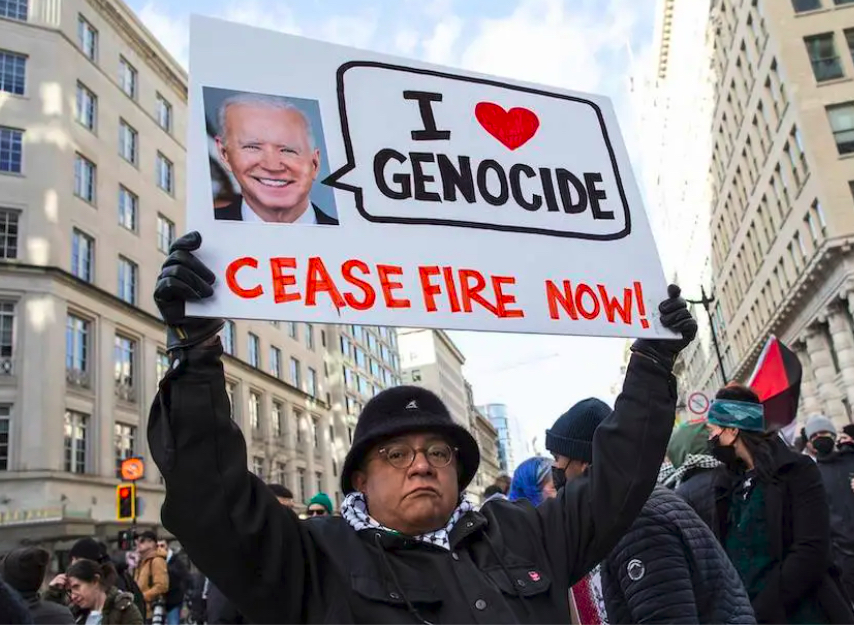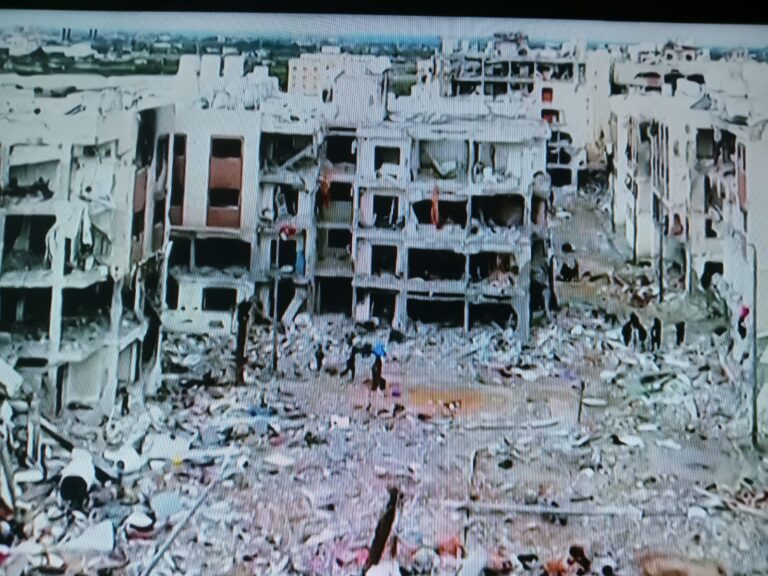
Biden love Israel
STRATEGIC ASSESSMENT. The ceasefire and hostage-for-prisoner swap deal announced by U.S. President Joseph Biden is still being considered, with intense shuttle diplomacy occurring in an effort to buoy the prospects of an agreement. U.S. diplomats headed to both Egypt and Qatar, and delegations from the major interlocutor countries, as well as from Israel and Hamas, have all been discussing the finer points of the possible deal. Even as diplomats are working to secure buy-in from each individual stakeholder, fighting in Gaza continues apace. Just yesterday, Israel Defense Forces (IDF) launched an offensive in central Gaza targeting Hamas fighters, although reports indicate civilian casualties resulted from an Israeli airstrike that hit a United Nations school complex where thousands of displaced Palestinians were sheltering.
The ceasefire talks are taking place against the background of escalation in other parts of the region, including in areas where members of Iran’s Axis of Resistance remain active. There is growing concern that Israel and Lebanese Hezbollah could soon move toward all-out warfare, with Hezbollah increasing its rocket and drone attacks in recent weeks, successfully targeting Israeli military installations and even hitting an Iron Dome battery. Israel has responded in kind by striking deep into southern Lebanon against Hezbollah targets in the Bekaa Valley, including senior leaders of the militant group. Israeli Prime Minister Benjamin Netanyahu has threatened that Israel is prepared to take “very strong action” to prevent further Hezbollah attacks.
Far-right Israeli minister and Netanyahu ally Itamar Ben-Gvir commented on the escalation with Hezbollah, stating: “Now the IDF’s job is to destroy Hezbollah. They’re burning [us] here. All Hezbollah strongholds should be burned, they should be destroyed. War!” Another far-right Israeli minister, Bezalel Smotrich, echoed Ben-Gvir’s statement by declaring: “Go to war with Hezbollah, subdue it, destroy it, move the security strip from the Galilee to southern Lebanon. Let our heroic warriors win, restore our national honor….” Understandably, however, there are reportedly leading voices with the IDF arguing against opening another front against Hezbollah, given the difficulties that Israeli troops are already facing in Gaza.
Both the United States and France have attempted to approach Israel-Hezbollah clashes with diplomacy, as Israel is determined to establish a buffer zone between its border and areas where Hezbollah fighters remain active. For the Israelis, the goal is to move Hezbollah north of the Litani River and beyond range where its antitank missiles can do serious damage. Hezbollah allegedly maintains an arsenal of approximately 150,000 rockets and missiles. Each side has accused the other of violating United Nations Security Council Resolution 1701, which calls for the full cessation of hostilities, the deployment of Lebanese forces to Southern Lebanon, parallel withdrawal of Israeli forces behind the Blue Line, strengthening the UN force (UNIFIL) to facilitate the entry of Lebanese Forces in the region and the establishment of a demilitarized zone between the Blue Line and the Litani River.
With growing tensions between Hezbollah and Israel, much of Lebanon remains on edge. Adding to the growing instability, earlier this week a gunman attacked the U.S. embassy in Beirut before being shot by Lebanese troops. According to the Associated Press, Lebanese media displayed photos of the attackers’ vest, which had “Islamic State” written in Arabic and the letters “I” and “S” in English. The Lebanese government remains weak and divided, while the economy is also sputtering. An Israel-Hezbollah war would be disastrous for Lebanon and the impacts would reverberate throughout the region, further devastating civilians, especially refugees and internally displaced persons.
Other Axis of Resistance actors remain active. Kataib Hezbollah, the most aggressive of the Iran-backed Iraqi militias, attacked a KFC restaurant in Baghdad, threatening to “boycott and expel” any brands associated with the United States. A dozen individuals were detained by the Iraqi security forces and the incident, along with other recent attacks, are under investigation. Like many in Lebanon, ordinary Iraqis are wary of being dragged into another conflict, especially one directed by Axis patrons in Tehran.
A recent surge in attacks by the Houthis prompted a muscular response from both the U.S. and the United Kingdom, with strikes targeting thirteen separate locations in Yemen late last week. The Houthis claim that one of the strikes in Hodeida hit a radio station, leading to civilian casualties. Commercial shipping through the Red Sea and the Gulf of Aden has been significantly impacted by the Houthis’ relentless attacks and the group has proven, at least to date, to be among the most undeterrable actors with the Iranian backed Axis of Resistance. Last week, a Marshall Islands-flagged, Greek-owned ship was attacked multiple times in the Red Sea.
After managing to deescalate following the April missile and drone barrage directed toward Israel, Iran is once again looking to play the role of spoiler, directing its proxies to demonstrate how unstable Tehran can make things in the region, even after any potential ceasefire deal is reached between Israel and Hamas. Given Iran’s own internal challenges, including an onus on replacing President Ibrahim Raisi and Foreign Minister Hossein Amir-Abdollahian, who died in a helicopter crash last month, there will be a focus on ‘business as usual’ to project an image of stability. This likely means working through the Islamic Revolutionary Guard Corps – Quds Force (IRGC—QF) to instigate Axis members to keep the U.S. and Israel off balance.





